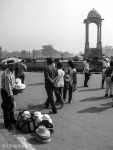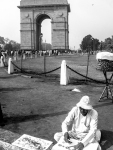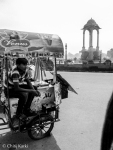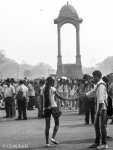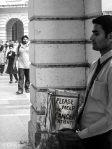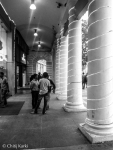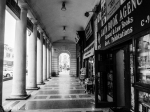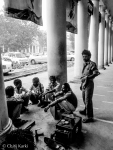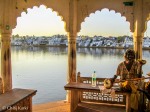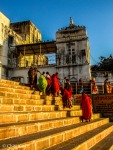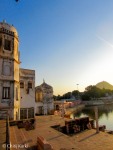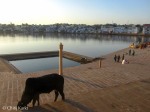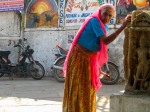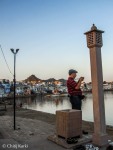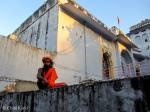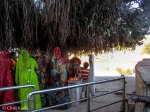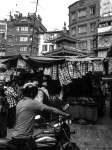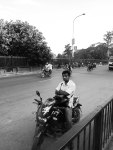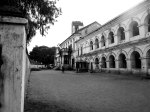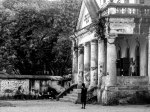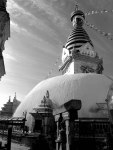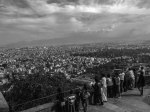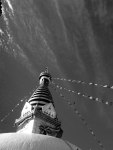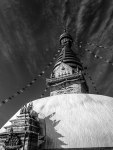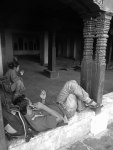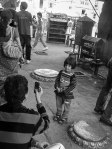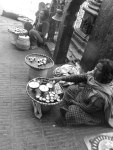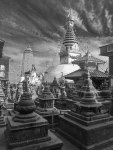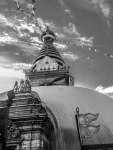The India Gate in Delhi is a memorial dedicated to the 90,000 Indian Soldiers who had given their lives in World War I and the Third Anglo-Afghan War. Constructed as the Indian Army’s Tomb of the Unknown Soldier, the India Gate has a prominent place in a civic consciousness of a country which had endured long years of colonization and a hard fight for freedom.
Connaught Place or “Rajiv Chowk” is a historical center of commerce in the bustling Indian Capital, Delhi. Composed of Concentric Circles of historical buildings built with a Victorian sensibility that stand as a the residue of India’s British past, though the atmosphere of the place in undeniably Indian. A nation where a populist unlicensed street vendors and elitist Gucci stores stand face-to-face. Is uneven progress is better than no progress at all? Like a party where the early birds get to eat the most….One nation ruled by the almighty ladder…
[Please Click on a Picture to Initiate a Slideshow]
Twelve kilometers from the historical city of Ajmer, Rajasthan lies the holy Hindu lake of Pushkar. According to legend, the Hindu creator god, Brahma, came down from the heavens to perform a yagna by the lake he’d created. However, he could not complete the yagna without the presence of his wife, Sarasvati, and consequently Brahma chose the next-best option of getting another wife, Gayatri. When an enraged Sarasvati found out, she placed a cursed on Brahma which stipulated that he could only be worshiped in Pushkar. Hence, the only major temple devoted to Brahma in the world is situated in Pushkar and hundreds of thousands of pilgrims flock to Pushkar to worship their cursed creator.
The modern Pushkar is now a holy tourist area. Being a holy lake, there is no meat and not a drop of alcohol to be found anywhere in Pushkar (although smoking seems to lack the sacrilegious edge and thus not banned). Pushkar is not only popular with internal tourists on pilgrimage but also with international tourists. To take advantage of the economic advantage of being in the tourist map, Pushkar has certainly adapted as many hotels, restaurants (many with disastrously Indianised western food as I came to discover) and souvenir stores have mushroomed throughout the periphery of the lake. Although India is an intimidatingly large country, Pushkar is comfortably small. All major sites can be comfortably reached on foot and one does not to depend on tempos and taxis as they are an unnecessary luxury.
The holy lake, whose peculiar green color seems to indicate that it is a victim of significant pollution that comes along with urbanization and tourist trade, is surrounded by 52 historical ghats (steps leading to the lake). Each ghat is dedicated to the historical kingdom that built it (Jaipur, Kot, Gurjar etc) or even people like Mahatma Gandhi or Queen Elizabeth II. The Hindu tradition that lies at the heart of the pilgrimage involves parikrama (walking around the lake or any other holy Hindu, Buddhist, Jain, Sikh place in a clockwise direction), bathing in the lake and pooja.
[Please Click on a Picture to Initiate a Slideshow]
These photos are dedicated to all the people who go through great lengths to make a living.
After devoting a lot of time to temples and other old cultural marvels of Nepal, I had a strong urge to indulge in some good old street photography. All of these photos were taken around “New Road”, a cultural, commercial hub of Kathmandu.
- The streets of Kathmandu
- Porters carrying a load in front of Mahaboudha stupa
- A Person looking at Mahaboudha Stupa, nearby a street vendor’s clothing stall.
- A (Pirated) DVD/VCD Seller Reading the Paper as he waits for Customers.
- A Man at an Electronic Appliances Store waiting for Customers.
- A Seller of Balloons
- I have no idea why that person is sitting on the ladder, but I am guessing that he must be either fixing the telephone/electric lines or enjoying the view of Ason from up the ladder
- A Bicycle shop nearby Ratnapark.
- Taxi Drivers waiting for passengers
- People having their shoes polished or fixed by a cobbler
- Police on patrol nearby Ratnapark
- Street Vendors at Ratnapark
- Darbar High School, the oldest school in Nepal, a decrepit wreck.
- A street vendor setting up her shop
- A “Kirana Pasal”, or an all-purpose store where people get daily amenities. Stray dogs love sleeping in the shade, a common sight in Kathmandu.
- A street vendor waiting for customers
- Rani Pokhari
- A blind beggar playing the “madal” for alms on the flyover in Ratnapark
- Street Vendors
- Kathmandu Traffic




